
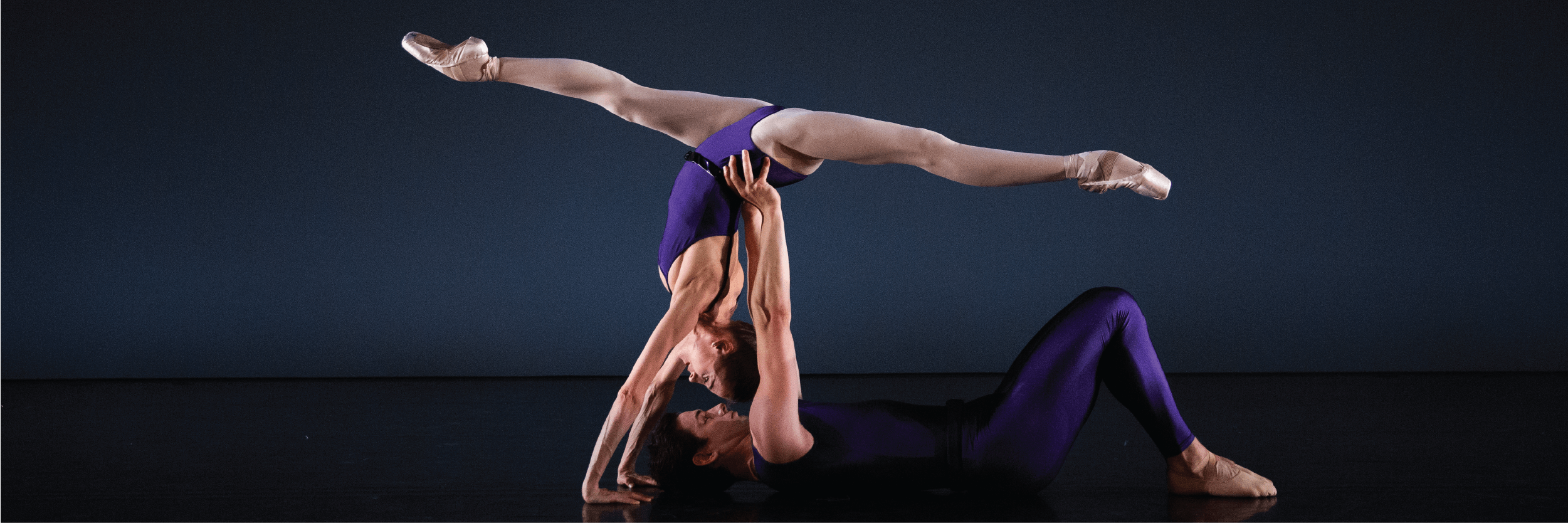

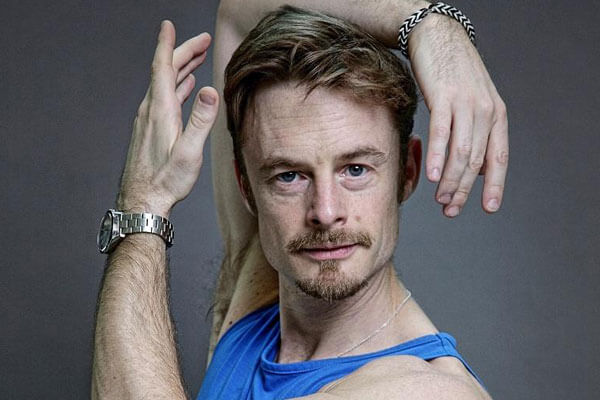
Choreographer
Christopher Wheeldon trained at The Royal Ballet School and joined The Royal Ballet in 1991. In 1993, he joined New York City Ballet and was promoted to Soloist in 1998. He was named NYCB’s first Resident Choreographer in July 2001. Since then, Mr. Wheeldon has created and staged productions for many of the world’s major ballet companies.
In 2007, Mr. Wheeldon founded Morphoses/The Wheeldon Company and was appointed an Associate Artist for Sadler’s Wells Theatre in London. Mr. Wheeldon now serves as Artistic Associate of The Royal Ballet. As Artistic Associate, Mr. Wheeldon has created many works for the company, including the full-length Alice’s Adventures in Wonderland and The Winter’s Tale, both of which were co-productions with The National Ballet of Canada.
For the Metropolitan Opera, he choreographed Dance of the Hours for Ponchielli’s La Gioconda (2006) and Richard Eyre’s production of Carmen (2012) as well as ballet sequences for the feature film Center Stage (2000) and Sweet Smell of Success on Broadway (2002). Mr. Wheeldon created a special excerpt for the Closing Ceremony of the London 2012 Olympics. In April 2016, he was the Artistic Director for the Fashion Forward exhibition in Paris at La Musee Arts et Decoratif.
In 2014, Mr. Wheeldon directed and choreographed the musical version of An American in Paris, which had productions in Paris, on Broadway, and in London. 2016 was The Joffrey Ballet’s world premiere of The Nutcracker reimagined by Mr. Wheeldon and he directed and choreographed the gala presentation of Lerner & Loewe’s Brigadoon starring Kelli O’Hara and Patrick Wilson at New York City Center in 2017. In 2018, Mr. Wheeldon staged two pieces in Tokyo: An American in Paris and Alice’s Adventures in Wonderland while in 2019, Wheeldon’s The Winter’s Tale was performed by The Bolshoi Ballet. 2019 was also the premiere for Corybantic Games at The Royal Ballet and a re-staged version of Cinderella for the English National Ballet at Royal Albert Hall.
In 2016, Mr. Wheeldon was named an O.B.E. and was made an Honorary Fellow of American Academy of Arts and Sciences. Bio adapted from https://christopherwheeldon.com/
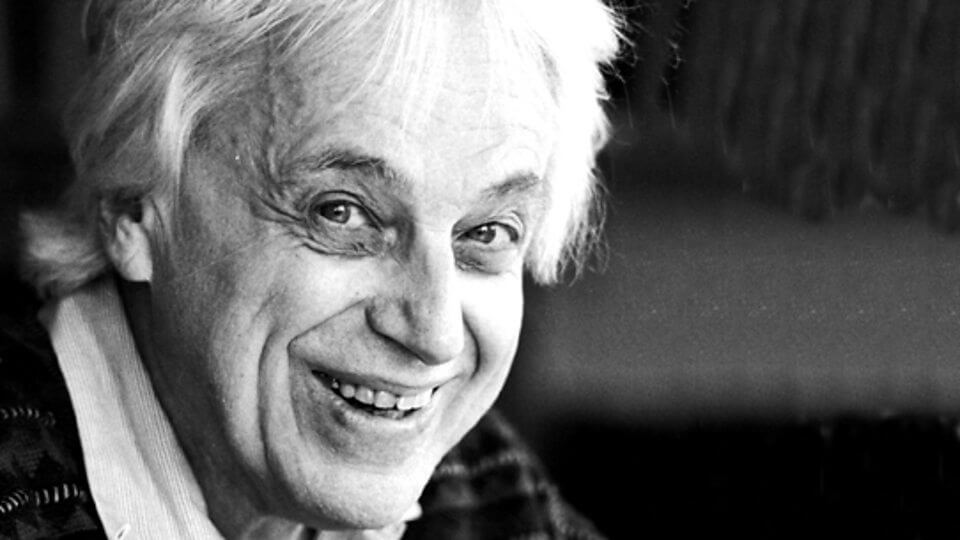
Composer
György Ligeti was one of the most important avant-garde composers in the latter half of the twentieth century, and was almost alone among progressive composers from the latter twentieth century who have written popular and widely performed music.
Ligeti was born on May 28, 1923, in the Transylvanian town of Dicsöszentmárton, Romania and grew up in Kolozsvar, Klausenburg. At the age of 14, he began taking piano lessons and soon wrote his first composition, a waltz.
In January 1944, Ligeti was arrested and sent to a labor camp where he remained imprisoned until 1945. Other family members were sent to Auschwitz, where only his mother survived. Ligeti graduated from the Budapest Academy of Music in 1949 and began an extended period of study of folk music.
In the years of 1950-1956, he served as a professor at the Budapest Academy. Ligeti began studying and composing at the Cologne-based Electronic Music Studio from 1957 to 1959, producing the influential Artikulation (1958), one of his first electronic works.
In Apparitions (1958-1959) and Atmosphères (1961), he developed a style forged from chromatic cluster chords that are devoid of conventional melody, pitch and rhythm, but instead grow into timbres and textures that yield new sonic possibilities. The composer referred to this method as “micropolyphony.” In Aventures (1962), Ligeti devised a vocal technique in which the singers are required to make a full range of vocalizations, cries and nonsense noises to fashion a kind of imaginary, non-specific drama, but with rather specifically expressed emotions.
His choral work Requiem (1963-1965) was another success, as were Ramifications (1968-1969), for string orchestra or 12 solo strings, and Clocks and Clouds (1972-1973). In 1972, Ligeti became Composer in Residence at Stanford University and the following year took on a professorship at the Hamburg Academy of Music. Ligeti composed his opera Le Grand Macabre in the period 1975-1977, but revised it in the 1990s, with the final version completed in 1997. It has become one of his most popular large works.
Ligeti retired from his post as professor of composition at the Hamburg Music Academy in 1989. In the 1990s, he spent much time on the aforementioned second version of Le Grand Macabre. Ligeti received his share of awards and prizes, including the 1986 Grawemeyer Prize and the 1996 Music Prize of the International Music Council. Source: https://www.allmusic.com/artist/gy%C3%B6rgy-ligeti
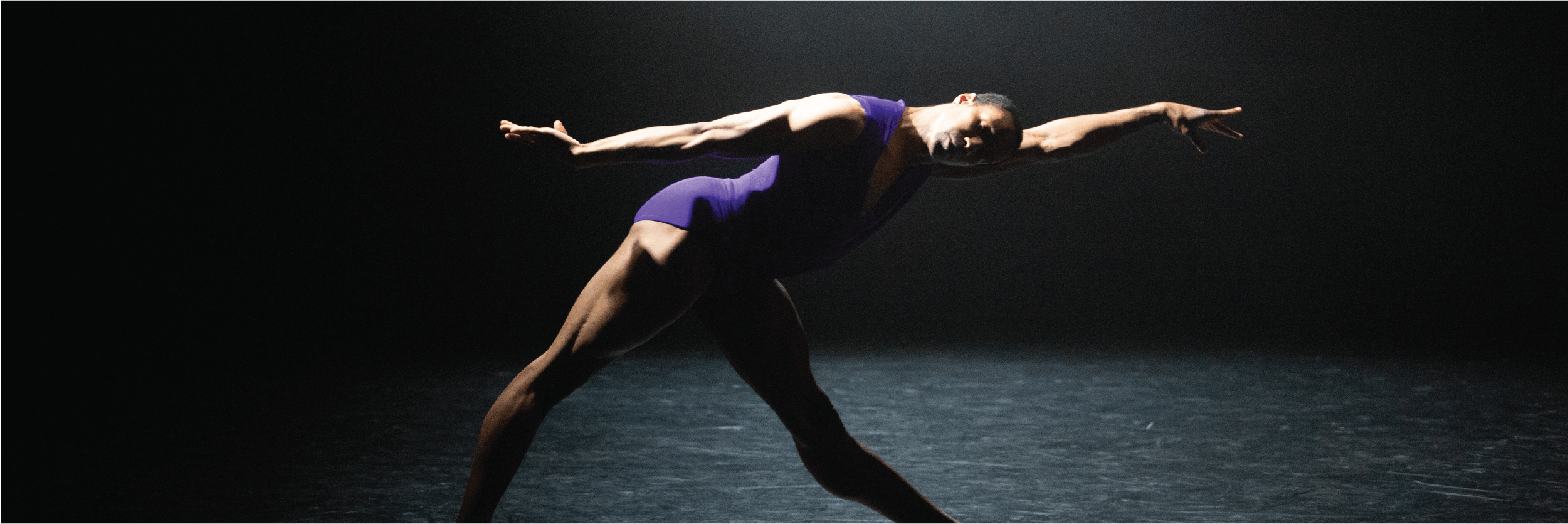
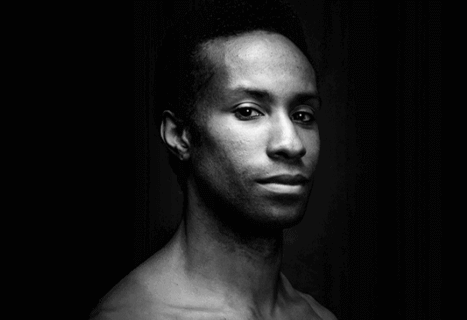
The Deborah & Kurt Hilzinger Principal Dancer
Jermel Johnson began his dance education at the Baltimore School for the Arts. His first four years were spent in their after-school program and his next three enrolled as a student in their rigorous and physically demanding dance department. Jermel then continued his training at the School of American Ballet (SAB), where he not only received a scholarship to attend their 2001 summer program but also spent an additional year studying under such renowned choreographers as Peter Martins, Peter Boal, Jock Soto, and Andrei Kramarevsky.
Jermel came to Philadelphia Ballet in September 2003 as a member of PBII. He was invited to join the company as an apprentice in 2004 and promoted to corps de ballet for the 2007/2008 season. In 2009, Jermel was promoted to soloist and then to principal dancer for the 2012/2013 season. As a principal dancer, Jermel has performed a variety of roles, including Robert Weiss’ Messiah, Christopher Wheeldon’s Swan Lake (Prince Siegfried), Jerome Robbins’ Afternoon of a Faun, and George Balanchine’s The Nutcracker® (Cavalier). His featured roles include such works as William Forsythe’s The Vertiginous Thrill of Exactitude, Matthew Neenan’s Keep, Jerome Robbins’ N.Y. Export: Opus Jazz (Statics), and Jiří Kylián’s Petite Mort.
During the 2007/2008 season, Jermel received audience and critical acclaim alike, not only for his standout performances at City Center in New York that November but also in Philadelphia later that spring while performing the world premiere of Matthew Neenan’s Pampeana No. 2. In October 2008, Jermel received a prestigious ballet fellowship from the Princess Grace Foundation – USA, which supported his salary for the season and will support his choreographic endeavors in the future.

Choreographer
Dwight Rhoden has established a remarkably wide-ranging career, earning distinction from The New York Times as “one of the most sought out choreographers of the day.”
A native of Dayton, Ohio, who began dancing at age 17, Rhoden has performed with Dayton Contemporary Dance Company, Les Ballet Jazz De Montreal and as a principal dancer with Alvin Ailey American Dance Theater. As a performer, he has appeared in numerous television specials, documentaries and commercials throughout the United States, Canada and Europe and has been a featured performer on many PBS Great Performances specials.
In 1994, Rhoden, along with Desmond Richardson, founded Complexions Contemporary Ballet. Together they have brought their unique brand of contemporary dance to the world for over two decades. Under Rhoden’s direction, Complexions has led the way in contemporary ballet in America, and remained consistent in delivering a profound passion for diversity that has framed its vision and become its hallmark.
For nearly three decades, Rhoden’s choreography has been the lynchpin in the development of the Complexions repertory. Since 1994, Rhoden’s work has filled some of the most prestigious theaters across the globe, presented on five continents and in over 20 countries. Rhoden has created over 100 ballets for Complexions, as well as numerous other companies, including Alvin Ailey American Dance Theater, New York City Ballet, The Washington Ballet, San Francisco Ballet, and Philadelphia Ballet, who performed his work “2 by 7” in 2006.
Rhoden has also directed and choreographed for TV, film, theater and live performances including So You Think You Can Dance, while also creating works for high-profile artists such as Prince, Lenny Kravitz, Paul Simon, Nina Simone, and U2.
Rhoden has served as Artist in Residence at universities around the United States including USC Glorya Kaufman School of Dance, New York University, Juilliard, UC Irvine, Skidmore College, The Boston Conservatory and The University of Mississippi, where his 2004 Racial Reconciliation Project was credited as a catalyst for dialogue in a community that had been historically divided.
Rhoden is a beneficiary recipient of various honors and awards including the New York Foundation for the Arts Award, and subsequent induction into the NYFA Hall of Fame, The Choo San Goh Award for Choreography and The Alvin Ailey Apex Award. Rhoden was nominated for a Benois De La Dance award for his libretto for The Great Gatsby ballet, and received an Honorary Doctorate degree from The Boston Conservatory in recognition of his extensive contributions to the field of dance. Biography adapted from https://kaufman.usc.edu/faculty/dwight-rhoden/
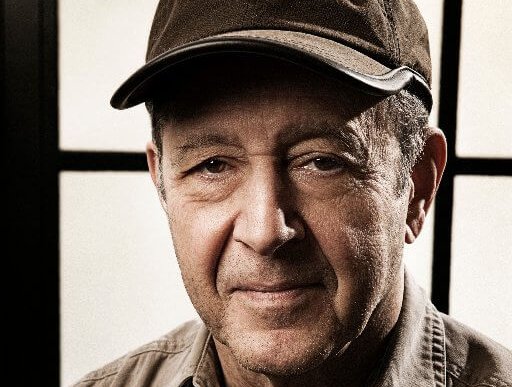
Composer
Steve Reich’s musical legacy has been influential on composers and mainstream musicians all over the world. His music is known for steady pulse, repetition, and a fascination with canons; it combines rigorous structures with propulsive rhythms and seductive harmony and instrumental color. Reich has been called “America’s greatest living composer” (Village Voice), and “among the great composers of the century” (The New York Times).
Born in New York and raised there and in California, Reich graduated with honors in philosophy from Cornell University in 1957. For the next two years, he studied composition with Hall Overton, and from 1958 to 1961, he studied at the Juilliard School of Music with William Bergsma and Vincent Persichetti. Reich received his master’s degree in music from Mills College in 1963, where he worked with Luciano Berio and Darius Milhaud. His studies have also included Balinese gamelan, African drumming (at the University of Ghana), and traditional forms of chanting of the Hebrew scriptures.
Different Trains and Music for 18 Musicians, as well as an album of his percussion works, have earned GRAMMY Awards, and Double Sextet won the Pulitzer Prize in 2009. Reich’s documentary video opera works—The Cave and Three Tales, done in collaboration with video artist Beryl Korot—have pushed the boundaries of the operatic medium and have been presented on four continents.
Reich’s music has been performed by major orchestras and ensembles around the world, and several noted choreographers have created dances to his music, such as Anne Teresa de Keersmaeker, Jirí Kylián, Jerome Robbins, Justin Peck, Wayne McGregor, Benjamin Millepied, and Christopher Wheeldon. Biography adapted from Boosey & Hawkes


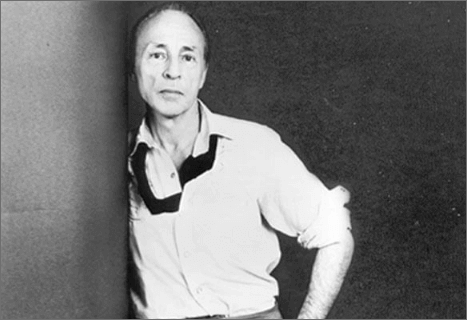
Choreographer
Born in St. Petersburg, Russia, George Balanchine (1904-1983) is regarded as the foremost contemporary choreographer in the world of ballet. Taking classicism as his base, Balanchine heightened, quickened, expanded, and revolutionized the look of classical ballet, which has had an inestimable influence on the growth of dance in America.
Balanchine came to the United States in late 1933, at the age of 29, accepting the invitation of the young American arts patron Lincoln Kirstein (1907-96), whose great passions included the dream of creating a ballet company in America. At Balanchine’s behest, Kirstein was also prepared to support the formation of an American academy of ballet that would eventually rival the long-established schools of Europe.
This was the School of American Ballet, founded in 1934, the first product of the Balanchine-Kirstein collaboration. Several ballet companies directed by the two were created and dissolved in the years that followed, while Balanchine found other outlets for his choreography. Eventually, with a performance on October 11, 1948, the New York City Ballet was born. Balanchine served as its ballet master and principal choreographer from 1948 until his death in 1983.
Balanchine’s more than 400 dance works include Serenade (1934), Concerto Barocco(1941), Le Palais de Cristal, later renamed Symphony in C (1947), Orpheus (1948), The Nutcracker (1954), Agon (1957), Symphony in Three Movements (1972), Stravinsky Violin Concerto (1972), Vienna Waltzes (1977), Ballo della Regina (1978), and Mozartiana (1981). His final ballet, a new version of Stravinsky’s Variations for Orchestra, was created in 1982.
He also choreographed for films, operas, revues, and musicals. Among his best-known dances for the stage is Slaughter on Tenth Avenue, originally created for Broadway’s On Your Toes (1936). The musical was later made into a movie.
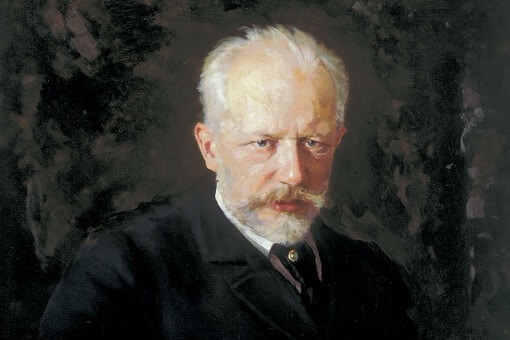
Composer
Peter Ilyich Tchaikovsky, born in Kamsko Votkinsk in the district of Viatka on May 7, 1840, was the son of a mining engineer. He was admitted to the School of Jurisprudence in 1852, and while he was still a student there, he composed a canzonetta that became his first published work.
In 1866, he moved to Moscow. There he came under the influence of Anton’s brother Nikolai Rubinstein and met Peter Jurgenson, who would eventually become his publisher. He began first opera, Voyevoda, in 1867, the year in which he met Berlioz and Balakirev, leader of the nationalistic movement in Russian music. Balakirev conducted the first St. Petersburg performance of Tchaikovsky‚ symphonic fantasia Fatum, composed in 1868. Tchaikovsky later destroyed the work, as he would several others, but it was eventually reconstructed. Balakirev’s influence was also felt in Tchaikovsky’s first masterpiece, Romeo and Juliet, which he rewrote several times at Balakirev’s suggestion.
From 1870 to 1874, Tchaikovsky became increasingly interested in nationalistic music, although his conservatory training and familiarity with Western techniques kept him outside the circle of “The Mighty Five” (Balakirev, Cui, Borodin, Mussorgsky and Rimsky-Korsakov). He wrote his first music for solo instrument and orchestra from 1874 to 1877, including his celebrated First Piano Concerto (1875), and in 1875 composed his first ballet, Swan Lake. The first performance in 1877 was considered a failure, but Swan Lake was later revived with new choreography by Petipa and Ivanov in 1895, at which time it was recognized as a masterpiece of the ballet repertoire.
With its inexhaustible stream of melody, an instinctive sense of movement considered ideal for the human body, and an irresistible rhythmic pulse and brilliant orchestration, Tchaikovsky’s music seems uniquely suited to ballet.
Adapted from http://www.abt.org/people/peter-ilyitch-tchaikovsky/?type=archive
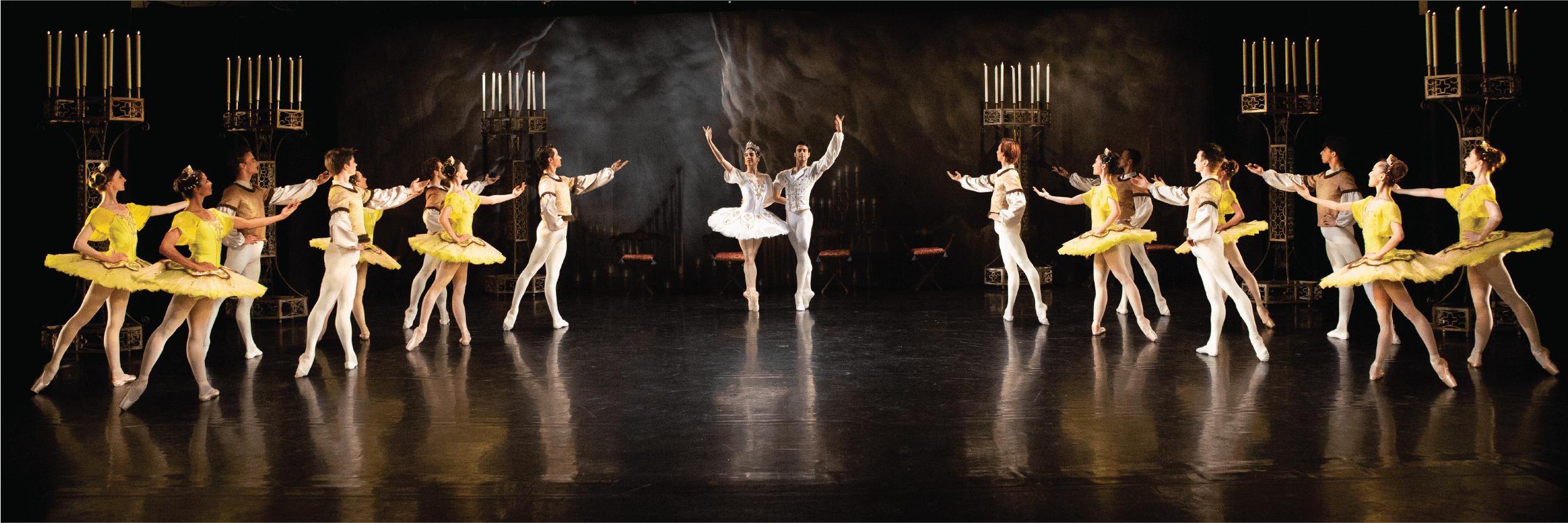
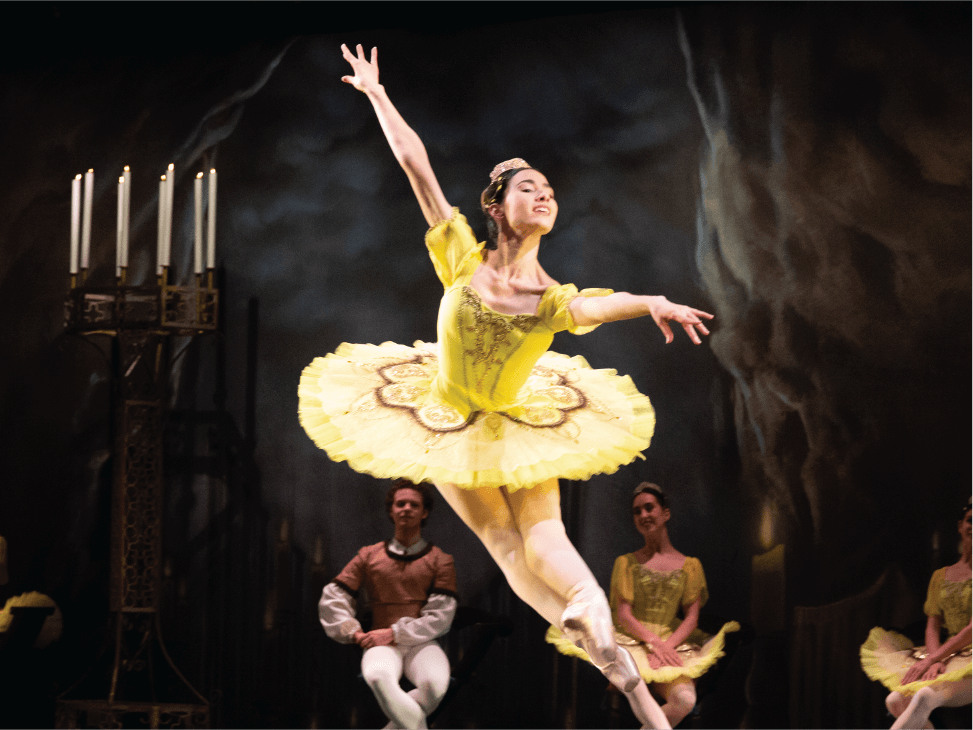
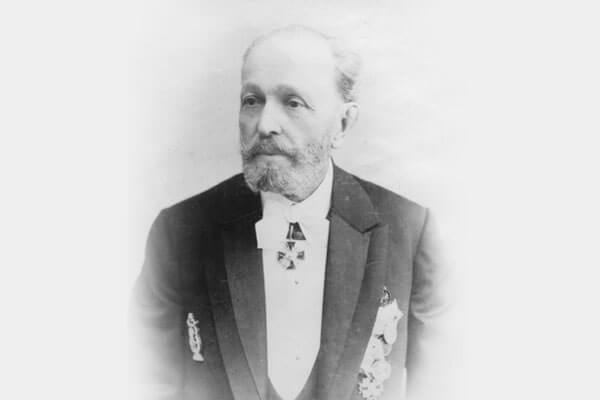
Choreographer
Marius Petipa, the “father of classical ballet,” was born in Marseilles, France in 1818. He began his dance training at age seven, studying with his father Jean Petipa, the French dancer and teacher. Though he disliked dancing early on, his progress was so great that he debuted in his father’s 1831 production of La Dansomanie. In 1834, his father became maitre de ballet at the theatre in Bordeaux, and it was here Petipa completed his education.
Petipa left Nantes in 1839 to tour North America with his father and upon their return went to Paris. The following year Petipa made his debut at the Comedie Francaise, where he partnered Carlotte Grisi in a benefit performance. He continued his studies with Auguste Vestris and became a principal dancer in Bordeaux. In 1845, Petipa left for Spain to work at the King’s Theatre. While in Madrid, he studied Spanish dance and choreographed Carmen et son Terero, La Perle de Seville, L’Aventure d’une fille de Madrid, La Fleur de Grenade, and Depart Dour la Course des Toureaux. Petipa returned to Paris as a principal dancer but in 1847 left for Russia. Though he had signed a one-year contract with St. Petersburg Imperial Theatre, he remained there for the rest of his life.
As a principal dancer, Petipa often appeared with Fanny Elssler and was highly acclaimed for his performances in such ballets as Paquita (which he restaged and made his St. Petersburg debut), Giselle, La Peri, Armida, Catarina, Le Delire d’un Peintre, Esmeralda, Le Corsaire, and Faust. Considered an exceptional dancer and partner, Petipa’s acting, stage manners, and pantomime were held up as examples for generations of dancers. When Giselle was revived in 1850, Petipa made some changes in the “Wilis” scenes, which became the Grand Pas des Wilis of 1884.
In 1854, Petipa married Maria Sourovshchikova, a student in the graduating class of the Imperial School, who later danced in many of her husband’s ballets (Petipa’s second marriage was in 1882 to Lubova Leonidovna, a member of the Moscow Ballet). In 1854, he also became an instructor at the school, while continuing to dance and to restage ballets from the French repertoire. Sources differ on the first original work he staged for the Imperial Theatre: some say it was The Star of Granada, while others claim it was A Marriage During Regency. All sources concur, however, that his first great success was The Pharaoh’s Daughter (staged in six weeks), which resulted in his appointment as choreographer in chief in 1862, a position he held for nearly fifty years. In 1869, he was appointed premier ballet master of the Imperial Theatre.
The value of Petipa’s accomplishments on ballet is immeasurable. He produced more than 60 full-evening ballets, countless shorter works, and he is considered to have laid the foundation for the entire school of Russian ballet. Toward the end of his career, however, those who believed the dramatic content of ballet should be strengthened began to oppose Petipa. They considered his noble classicism and consciousness of form as old fashioned, and, in 1903, at the age of 84, he was forced to retire from the Imperial Theatre as a direct result of the failure of his ballet, The Magic Mirror. Owing to the fact his beloved theatre had been taken away from him, Petipa’s final years were filled with bitterness and disillusionment. He died in St. Petersburg in 1910.
Source: http://www.abt.org/education/archive/choreographers/petipa_m.html
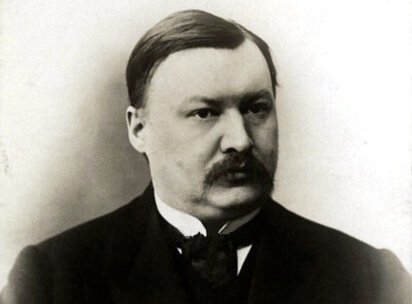
Composer
When Tchaikovsky died in 1893, Marius Petipa began to search for composers for his ballets. One of those to whom he turned was Alexander Glazunov, who was not yet thirty, but who had been one of the most gifted protégés of Rimsky-Korsakov and who already enjoyed a considerable international reputation. The results of their collaborations were three ballets: the three-act Raymonda in 1898, Glazunov’s first work for the theater, and Les Ruses d’amour and The Seasons, composed in 1898 and 1898, respectively, and produced in 1890.
Glazunov was born in 1865 in St. Petersburg into a cultivated family. His talent was evident early, and he began to study the piano at age nine and to compose at age 11. In 1879, he met the composer Mily Balakirev who recommended studies with Nikolai Rimsky-Korsakov, with whom his formal lessons advanced rapidly. At age 16, Glazunov completed his First Symphony, which received its premiere in 1882 led by Balakirev, followed by a performance of his First String Quartet. His talent gained the attention of the arts patron and amateur musician Mitrofan Belyayev, who championed Glazunov’s music, along with that of Rimsky-Korsakov, Anatoly Lyadov, among others, and took Glazunov on a tour of western Europe, during which he met Franz Liszt in Weimar. In 1889, Glazunov led a performance of his Second Symphony in Paris at the World Exhibition.
Glazunov’s ballets were commissioned by Ivan Vsevolozhsky, director of the Imperial Theatres, for Petipa, his ballet master. Petipa and Vsevolozhsky’s original intentions were to commission the score for Les Millions d’Arléquin, or Harlequinade, from Glazunov and for Riccardo Drigo to compose the score for The Seasons.
The composers were close friends and soon developed an affinity for each other’s assigned ballet. Glazunov expressed to Petipa and Vsevolozhsky that the subject of Harlequinade was ideally suited to the Italian composer’s talents. In the end, Glazunov was commissioned to compose the scores for the two one-act ballets The Seasons and Les Ruses d’amour, while Drigo wrote the music for the two-act Harlequinade.
In 1899, Glazunov was appointed professor at the St. Petersburg Conservatory and at the end of 1905, became its director, a position he kept until 1930. During this period and notwithstanding heavy teaching and administrative responsibilities, Glazunov completed his Violin Concerto, Eighth Symphony, First Piano Concerto, and his Sixth String Quartet, some of his most acclaimed orchestral and instrumental works.
In 1932, Glazunov moved to Paris, where he settled with his wife and adopted daughter. His Saxophone Concerto, written in 1934, was one of his last large-scale works. He died on March 21, 1836. Biography adapted from https://www.abt.org/people/alexander-glazunov/